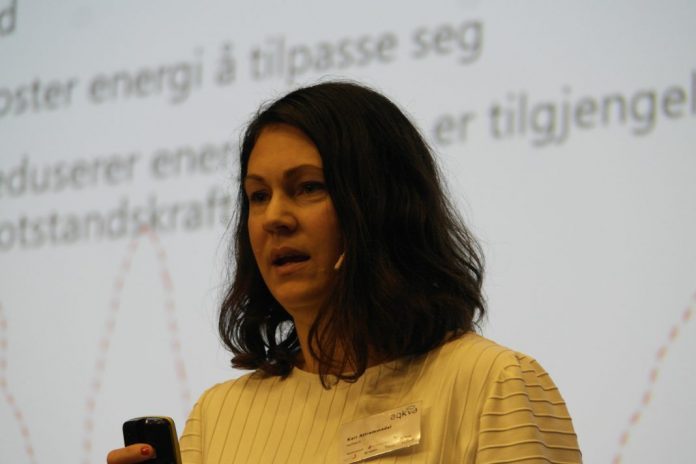“The fish eats, drinks, breathes and goes to the toilet in the water. There’s more bacteria there than in the air.”
That is what Kari Attramadal, research director at RAS operators Nofitech, said at today’s Aqkva conference in Bergen, Norway.
‘In a closed plant it’s the farmer who is responsible for the water,” she said, adding that: “In closed plants there is a concentration of bacteria. If you just leave the fish in the closed tank – then it dies.”
Just this puts extra demands on cleaning.
Arguments
“Reduced water consumption, optimal temperature all year round and the growth of fish depends on water temperature. That’s the argument (why) most new hatcheries that are being built in Norway are now RAS (Recirculating aquaculture systems).”
But the pitfalls of RAS plants are many.
“Increasing the pH of the plant increases the toxicity of ammonia, CO2 and aluminum. The fish can live well at eight or 12 degrees, but if you change the temperature, frequently and too much, you’ll create stress – and then the fish can die,” said Attramadal.
Pathogens
“Biosafety is important – to stop pathogens from entering the market. Therefore, we recommend several barriers, with a combination of UV and membrane filters,” said Attramadal, adding: T
RAS plants have had their fair share of production accidents and loss of fish.
“Some of the accidents that have occurred have been that one has operated in the same way in seawater as in fresh water,” she said, pointing out that, for example, corrosion and ozonation are different in fresh water versus sea water.
Marrying the two
Particle removal, as well as providing access to oxygen and nitrate, is essential to success.
The big risk is H2S, the extremely toxic gas hydrogen sulphide.
“There is a thousand times more sulphate in seawater than in fresh water. Membranes can remove sulfate,” she pointed out.
Extremely responsible
Nofitech has studied production losses at Norwegian RAS plants and isolated the risk areas which are:
- Design errors and operating errors
- Dead zones, thresholds, hooks and tight pipe angles
- Too low water flow
- Stagnant water or sludge, which creates gas
“I can’t repeat it often enough. Good training of people is important. Those who work at these facilities have an extreme responsibility. Both life and money can be lost – I count fish as life too,” said Attramadal.

